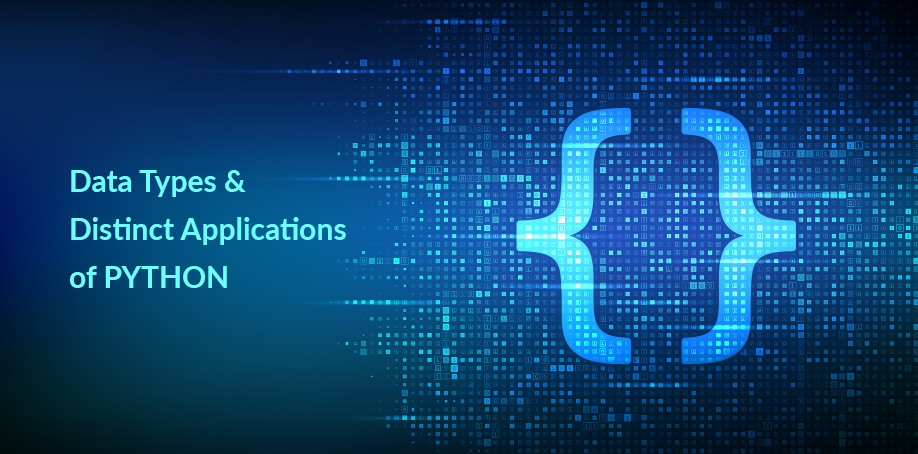
Are you a coding enthusiast? Do you love to code challenging programs? Are you facing difficulty in exploring much about programming?
Well, nothing to worry about!
It doesn’t matter whether you are a beginner or an expert, what all matters is the passion and zeal you have towards the discipline.
Also, it sounds pretty sure that you all have come across the term “Python”. Don’t you? Python which is addressed as a high-level, Object-Oriented Programming language is designed pretty simple and has the least code lines comparatively to other programming languages. It is well readable and understandable to all learners irrespective of their academic background. Due to the rise in technology, the scope of python language has increased. It has been labelled as a flexible programming language that is adaptable in diversifying areas such as Data Science, Artificial Intelligence, Web Development, Automation Testing, Mobile App Development, Computational Linguistics, Natural Language Processing, etc.,
This general-purpose programming language supports both functional as well as procedural programming. To build the program, one needs to know the data types. So, let us enter into the concept where one could understand the various data types and their functions in python programming.
Data type:
A Data Type in python programming is exclusively about the categorization and representation of the type of the value the respective variable consists of.
Data Types in python?
Alike other programming languages, there are built in data types in python.
- None
- Numeric
- Sequence
- Boolean
- Set
- Dictionary/Mapping
Why do we need them?
During the programming part, a programmer/coder must be aware of the type of the data to process it accordingly elsewhere the respective code ends up with errors before the execution.
Data types in python with examples are as follows:
None:
Python’s Null object is known as NoneType. When you come across a variable that has no value assigned to it then it is called no variable. Instead of representing it as null, we use none in python. It has no useful attributes and is left to carry the Boolean value “false”.
Numeric:
Numeric data types are as follows:
- int (Integer)
- float (Floating number)
- complex (Complex)
1. int:
A data type that represents the range of whole-valued positive and negative numbers.
Example:
#Assign a value to a variable
a = 5
#Pass a function to get to know the datatype that ‘a’ belongs.
type (a)
#Therefore the type of the ‘a’ is ‘int’ that consists of an integer value.
< class ‘int’ >
2. float:
float data type represents the real numbers with decimal points.
Example:
a = 4.5
type (a)
< class ‘float’ >
3. complex:
The complex data type is used to represent multiple values and a pair of floating-point numbers.
Example:
a = 8+9j
type (a)
< class ‘complex’ >
Sequence:
Sequence data types are as follows:
- list
- tuple
- str(String)
1. list:
The list data type in python consists of a collection of an ordered sequence of values separated by a comma enclosed in square brackets.
Example:
a = [1,4,8]
type (a)
< class ‘list’ >
2. tuple (tuple python):
It represents a sequence of values separated by a comma surrounded by round brackets (parenthesis).
Example:-
a = (8, 0 ,1)
type(a)
< class ‘tuple’ >
3. str
Similar to the list and tuple in python, the str data type is about an array of characters placed inside quotations.
Example:
a = “cat”
type (a)
< class ‘str’ >
Boolean:
bool:
This data type aids in decision making by representing either one of the two-state values such as true or false, yes or no, on or off.
Example:
a = 2 < 3
type (a)
< class ‘bool’ >
Set:
set data type specifies the collection of elements that are unique and could be varied in number without any null values. This unordered collection of data items is placed inside the curly brackets separated by a comma.
Example:
a = {6, 9, 8}
type (a)
< class ‘set’ >
Dictionary:
This data type aids programmers to fetch a huge amount of data efficiently by assigning a key to each value. Instead of allotting index numbers to find the data, one could allot a key to the value that would make the job pretty easier in identifying the relevant information.
a = {‘apple’ : ‘fruit’, ‘sweet’ : ‘flavour’, ‘cricket’ : ‘sports’}
#Pass the function to know the keys.
d.keys ()
dict keys ({‘apple’,’sweet’,’cricket’})
#Pass the function to know the values
d.values ()
dict values ({‘fruit’,’flavour’,’sports’})
Conclusion:
With the accelerating technologies, there comes a need to update ourselves. So, why don’t we get advanced!! Let us align with those technologies for the automated future. Python is here to pave the way in technology development, control, and management. Being a simplified and general-purpose programming language, it is easily understandable for beginners and is widely applicable in numerous sectors. The above-mentioned data types enable the computers to code the data followed by the interpretation.
So, what are you looking for! Join our course, learn step by step, and code with us.
Here’s the link to register:
©️ 2024 Edify Educational Services Pvt. Ltd. All rights reserved. | The logos used are the trademarks of respective universities and institutions.
